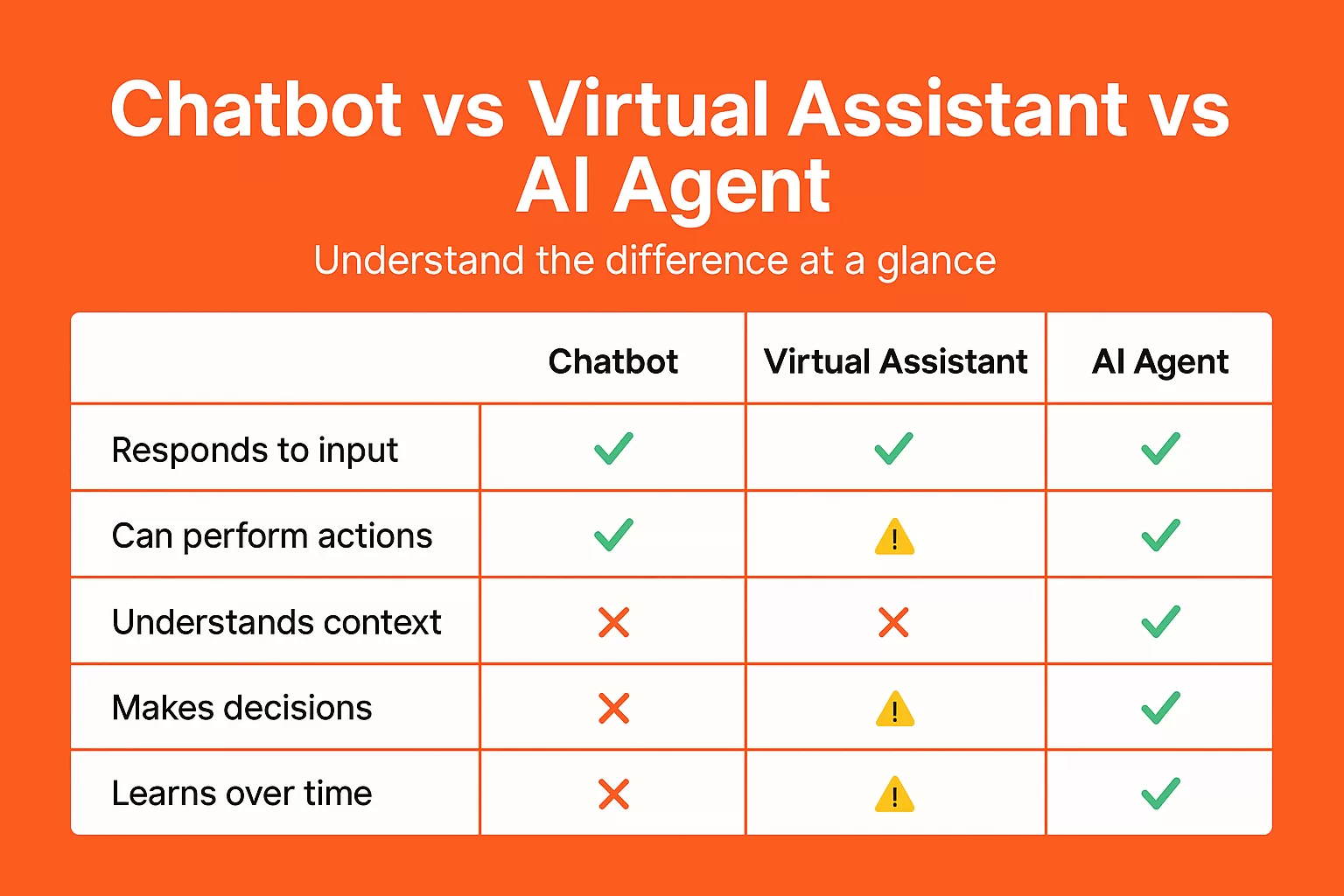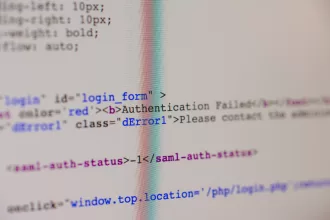You’ve probably chatted with a bot online, used Siri to set a reminder, or seen some fancy AI tool take action on your behalf. Besides personal life, according to the study IBM Global AI Adoption Index (2022), 77% of companies are either using or exploring AI. But here’s the question: are these all the same thing? Not quite.
The terms chatbot, virtual assistant, and AI agent get thrown around like synonyms, but they each refer to different types of systems, with different levels of intelligence, autonomy, and purpose.
In this post, we’ll break it down simply, so you know exactly what you’re dealing with, and what powers tools like TestBooster, our intelligent testing solution, can build using AI.
What’s a chatbot?
A chatbot is the simplest of the three. Think of it like a digital receptionist: it follows scripts, asks basic questions, and gives pre-written answers. Chatbots are often built with decision trees or keyword triggers, not with real intelligence.
They don’t understand your question, they just know how to match it to the closest answer they were trained to give.
For example, ordering pizza via a website chatbot. You say “I want pepperoni,” and it replies “Great! One pepperoni coming up.” But ask it “What’s your favorite topping?” and it’ll likely get confused.
What’s the bottom line? Chatbots are reactive, limited, and great at following a script. But they don’t adapt or learn.
What about virtual assistants?
Virtual assistants go a step further. They’re usually voice-enabled (though not always), understand natural language better, and are designed to help you do things.
They can open apps, send messages, adjust your calendar, or control smart devices. They recognize context a bit better, and they can remember preferences—but they still have limitations. Most don’t make decisions on their own. They wait for your prompt.
For example, telling Google Assistant, “Remind me to call John tomorrow,” and it sets it up without a hitch. But if John changes his number or switches time zones, it won’t adapt unless you manually update the info.
So where they shine? Personal productivity, smart home control, and handling simple tasks quickly.

What is an AI Agent?
Now we’re talking real intelligence.
AI agents are designed to operate with a level of autonomy. They observe, learn, make decisions, and take action, all this without waiting for you to guide every step.
Unlike chatbots and virtual assistants, agents can have goals. They evaluate their environment, adjust to new conditions, and work over time. That means they don’t just respond, they solve.
For example, an AI testing agent that notices a recurring test failure, rewrites the test on its own, and reruns it to validate the fix. No prompt. No script. Just action.
So, What Powers TestBooster?
TestBooster is built on AI agents, not chatbots or scripted flows.
That’s why it can do things like:
- Work from the application context, not the source code.
- Test cases are written in natural language.
- Keep tests running with minimal effort.
- Easily expand your test coverage.
It doesn’t just wait for a Developer to click “run.” It works proactively. It acts as an intelligent teammate in your testing workflow.
Want to see it in action? Try TestBooster now.
Quick Recap

Not all AI tools are equal
AI is evolving fast, but not all AI tools are created equal. While chatbots and virtual assistants have their place, AI agents are leading the way in fields that require adaptability, decision-making, and continuous learning.
In software testing, that makes all the difference.
TestBooster doesn’t just help you test faster, it helps you test smarter. Ready to bring AI agents into your QA process?






